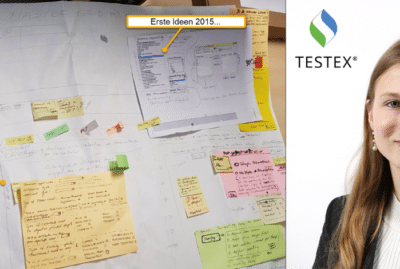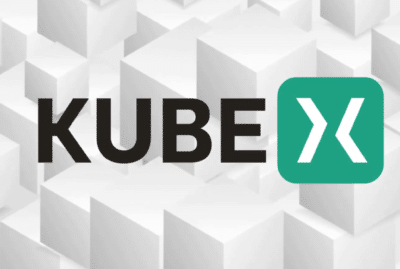Nowadays, migrating to the cloud is a crucial step for companies to improve their IT infrastructure and increase their competitiveness. However, the question “How much does the cloud cost?” is always at the centre of this important transition.
How much does the cloud cost?

The costs of a cloud migration
The complexity of cloud computing requires in-depth consideration of various aspects and functions – from planning and preparation to implementation and optimisation. While companies use the flexibility and scalability of the cloud to minimise operating costs, they must also consider the financial aspects to enable a transparent cost estimate. Our cloud experts at soxes will be happy to advise you in detail! You can find out which steps are involved here.
Planning and preparing for a cloud migration
The initial phase of a cloud migration requires careful planning and preparation. This involves costs for evaluating the existing infrastructure, consulting services, setting goals and possible training for employees. Thorough planning is crucial to minimise potential risks and ensure an efficient transition.
Migration and implementation
- Selecting the cloud platform: Companies face the challenge of choosing the right “online storage” for their needs. For example, the cost of using a platform such as Amazon Web Services (AWS), Microsoft Azure or Google Cloud can vary depending on the specific requirements and services they offer.
- Software licences and customisations: Software licence costs may be incurred when migrating certain applications, files or tools to cloud storage. In addition, customisations or changes to existing applications or systems may be required to make them cloud-compatible. These adjustments can range from the conversion of individual configurations to extensive development work.
- External support: Sometimes companies need external experts or consultants to support them in the planning, implementation and execution of the cloud migration. The costs for this vary depending on the scope and complexity of the project, the requirements of the cloud service and the experts involved. We will make you an offer that fulfils your needs and requirements.
Example: A company migrates its entire data structure to the cloud. This includes the transfer of customer databases, applications, internal files and archiving systems. The final price includes the selection of Amazon Web Services (AWS) as the cloud platform, the purchase of licences for certain software applications and the adaptation of the internal CRM platform to make it cloud-compatible. External support is obtained for the implementation and training of the internal team.
Optimisation and customisation
After the successful migration, there are ongoing cloud costs for maintenance and optimisation:
- Ongoing maintenance costs: this includes regular maintenance routines, patches, security updates and general management of the cloud solution. This can either be carried out internally by your own team or by external service providers.
- Optimisation for costs and performance: Continuous optimisation aims to use resources efficiently while reducing operating costs. This can be achieved by adjusting resource utilisation, automating processes and implementing cost management tools.
Example: After migrating to cloud storage, a company continuously monitors and optimises its cloud resources to avoid excessive costs. It uses automated scaling tools to scale resources according to actual demand and implements cost management strategies to monitor and control expenditure.
Important: Actual cloud storage prices and savings may vary depending on individual requirements and the complexity of the migration process.
Cloud migration with slice and dice process
With the help of our unique KUBE-X platform, we can take your application to the cloud step by step. Without a BIG BANG!
The migration takes place smoothly and cost-effectively in the background while your application continues to run as normal.
Convince yourself now of our slice and dice process with KUBE-X!

Cost-benefit analysis: Expenditure, savings, benefits
At soxes AG, we understand that a cloud migration is a significant strategic decision for any organisation. A comprehensive cost-benefit analysis is crucial to help organisations understand the implications of such a transition. Our expertise and experience enable us to successfully guide companies on their journey to the cloud and help them make the best decisions for their long-term IT strategy.
Factors that influence costs
The size and complexity of existing IT infrastructures determine the initial investment and long-term benefits of a cloud migration. The larger and more complex systems are, the greater the initial investment may be, while the long-term benefits in terms of flexibility and scalability can be significant.
Necessary customisations and integrations during the migration may involve additional costs. A thorough cost-benefit analysis is critical to evaluate the price versus the expected benefits of improved flexibility and scalability. Investing in training and retraining for your team may initially incur expenses, but the expected productivity gains after successful training are invaluable.
Potential savings and benefits
Aside from the direct costs, cloud migration offers opportunities to optimise operations and associated savings. Outsourcing maintenance tasks and security aspects to the cloud provider can free up internal resources that can be utilised for more strategic tasks. Scalability and flexibility also enable better utilisation of resources.
With our KUBE-X development platform, we can also carry out your migration cost-efficiently and immediately. In just a few steps, we can move your business solution to the cloud with our slice and dice process. Do you need a completely new software solution that runs on a cloud right from the start? No problem – we can develop your customised solution directly within the cloud using our KUBE-X platform. For you, this means shorter development times of up to 60%, greater security, high modularity and reduced hosting costs of up to 70% thanks to standardised technologies. Find out more about the benefits of KUBE-X here.
The various cost components of cloud storage
Infrastructure costs
In the cloud, costs are incurred for computing power, storage space and network infrastructure. Compared to traditional on-premise systems, the cloud enables flexible and scalable use of resources, resulting in potential cost savings through optimised use and access.
Example: A company temporarily requires increased computing power for a project. Instead of buying or renting physical servers, it can launch additional virtual machines in the cloud at short notice and only pay for the computing power it actually uses. Once the project is complete, these resources can simply be shut down, eliminating unnecessary costs.
Operating costs
The operational costs of cloud storage include administration, server maintenance, software updates and security measures. Prices can vary greatly compared to conventional on-premise systems.
Example: Companies that traditionally operate their own servers bear the costs for the purchase of hardware, regular maintenance and energy consumption. In the cloud, the cloud provider takes over these tasks, resulting in potential cost savings as no investment in physical hardware or regular maintenance is required.
Costs for software and licences
This section looks at the costs of cloud-based software and licences compared to traditional purchase models. Flexible licensing in the cloud often offers more cost-efficient options. It also makes a difference whether the cloud solutions are used via a private or public cloud. The choice of cloud provider is therefore also an important decision that must be made in advance.
Example: A company is considering switching to CRM software. In traditional on-premise systems, it would have to buy the software licences for each workstation. In the cloud, the company can use the software on a subscription basis and only pay for the licences it actually needs. As requirements change, additional licences can be easily added or removed, providing a flexible and cost-effective solution.
Conclusion
A cloud migration is not just a technological change, but also a strategic decision that affects the entire business infrastructure. The cost-benefit analysis is an essential tool for fully understanding the financial impact of such a migration.
Companies should not ignore the potential challenges during the planning and implementation of a cloud migration. However, carefully analysing these challenges as part of a cost-benefit analysis allows risks to be minimised and long-term benefits to be better understood.
At soxes AG, we understand the complexity of cloud migration. Our expertise and experience help to understand the implications and opportunities of cloud integration and make the best decisions for a long-term IT strategy.
The potential of cloud computing is not just limited to financial aspects. In addition to the direct costs, it also helps to optimise operational processes and free up internal resources for more strategic tasks. Scalability, flexibility and improved efficiency are just some of the long-term benefits that companies can gain from a successful cloud migration.
Contact
Do you have any questions? Would you like to find out more about our services?
We look forward to your enquiry.
Contact us






































































